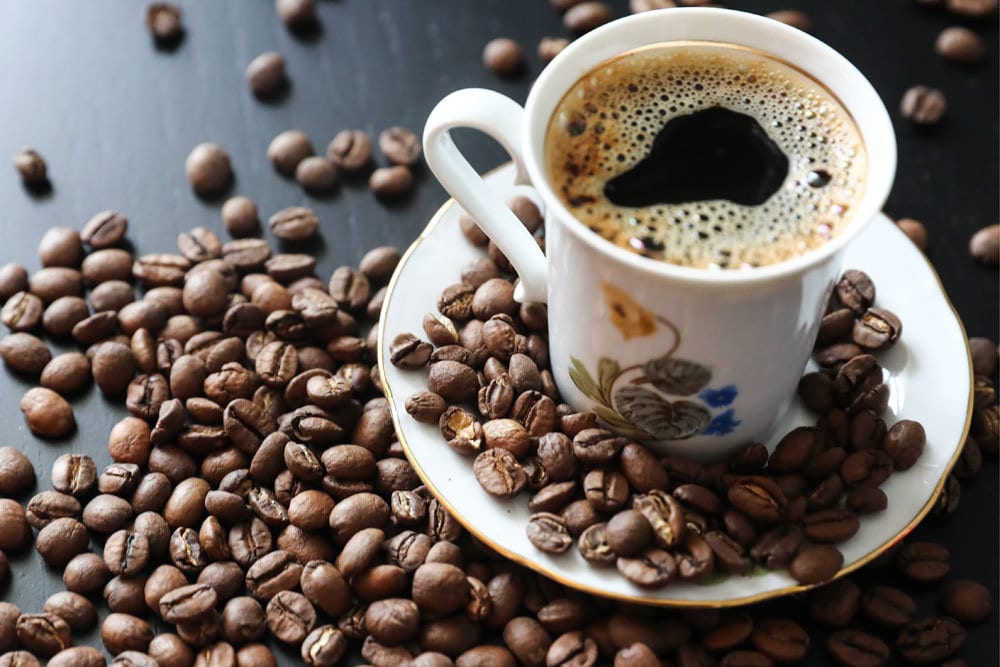Contents
Description
Coffee (Arab. qahwa – stimulating beverage) – tonic non-alcoholic drink prepared from roasted coffee beans. This tree is a warm-loving plant, so it is grown in highland plantations. For the production of beverages, they use two varieties of trees: Arabica and Robusta. On the consumer properties of the Arabica is a milder but more aromatic, Robusta, on the contrary. So often in the sale, there is a mixture of these two varieties in different proportions.
Coffee history
The history of the emergence of coffee is shrouded in a huge number of legends. The most famous is the legend about the shepherd who noticed how behaved goats after eating this tree’s leaves. Goats especially strongly showed their activity from the coffee fruit. The shepherd gathered a few berries from the tree and tried to infuse them with water. The drink was very bitter, and the remaining coffee berries he threw into the coals of a fire.

The aroma of the resulting smoke was so enjoyable and intoxicating, and the shepherd decided to repeat his attempt. Kicked the coals, he took out the coffee beans, filled them with boiling water, and drank the resulting beverage. After some time, he felt a surge of strength and energy. About his experience, he told the Abbot of the monastery. He tried the drink and has seen the wonderful effect of coffee on the body. For the monks to not fall asleep during the night prayers, the Abbot ordered everyone to drink a decoction of roasted beans in the evening. This legend refers to the 14th century and its events that happened in Ethiopia.
Popularity
The wide distribution of coffee took place thanks to European colonizers. For the French king and his subjects and to fulfill the need for caffeine, these trees began to grow in Brazil, Guatemala, Costa Rica, South India on the island of Java, Martinique, Jamaica, Cuba. Currently, the main producers of coffee in the world market are Colombia, Brazil, Indonesia, Vietnam, India, Mexico, and Ethiopia.

For the ultimate consumer to obtain coffee beans in the usual way, coffee undergoes several production processes:
- Picking berries. To improve the quality of ripe berries from the trees disrupted only by hand or by shaking the tree.
- The release of the grains from the pulp. Pulping machines remove the bulk of pulp, and then in the fermentation process of grain frees from all residues. They wash refined grains with pressured water.
- Drying. Clean coffee beans layout on concrete terraces or special drying under direct sunlight. The process of drying occurs within 15-20 days. During this period, grain flips about 1400 times, i.e., every 20 minutes. Also while during, they strictly control the moisture level of the beans. The dried bean has a moisture content of 10-12%.
- Classification. Mechanical sieves and separators are separated from the coffee beans husk, pebbles, sticks, and black, green, and broken beans, dividing them by weight and size. Split grain pour bags.
- Tasting. From each bag, they take a few grains of roasted beans and brew the beverage. Professional tasters can determine the subtle differences of flavor and aroma and, based on their conclusion manufacturer defines the cost of the finished product.
- Roasting. Used in the production of four main degrees of coffee roasting. Dark beans are best for espresso.
Most delicious
The most delicious and aromatic coffee is obtained from freshly grounded beans, so the coffee grinder is made for the end-users. However, some distributors and suppliers of coffee ground and pack in foil vacuum packing for preserving all quality characteristics. At-home storage of coffee should be in an airtight jar or packaging without access to air and moisture.
Coffee is the raw material for the preparation of more than 500 types of coffee drinks and cocktails. The most popular and worldwide famous are espresso, Americano, macchiato, cappuccino, lattes, iced coffee, etc. For this drink, people use pots, percolators, and espresso machines.
Coffee benefits
Coffee has several positive properties. It contains more than 1,200 chemical compounds. Of these, 800 are responsible for flavor and aroma. Coffee also contains more than 20 amino acids, vitamins PP, B1, B2, micro – and macronutrients calcium, magnesium, sodium, potassium, phosphorus, iron.

Coffee has a strong diuretic effect; therefore, it is necessary to monitor the water balance and drink at least 1.5 liters of natural water while using it. Also, it has a slight laxative effect.
Coffee refers to soft drinks, so drinking it gives a short period of time a burst of energy, vitality, improved attention, memory, and concentration. It contains caffeine soothes headaches, migraines, and low blood pressure.
Daily consumption of coffee may significantly reduce the risk of diabetes and improve insulin sensitivity in people who already have the disease. Some substances in this drink have a restorative effect on the liver cells and prevent cirrhosis development. The presence of serotonin in the drink relieves depression.
Cosmetology
Ground beans are widely popular in cosmetics as a cleansing dead skin means. Cosmetologists use it as a scrub for the whole body. It improves blood flow to the upper layers of the skin, tones it, normalizes metabolic processes. Using strong brewed coffee as a hair mask can give your hair a chocolate color to make them more strong and shiny.
In addition to the direct application of coffee drinks, it is also used for desserts, cakes, sauces, creams, sugary cereals (semolina, rice, etc.).

The dangers of coffee and contraindications
Coffee prepared by the espresso method, or just filled with boiling water, increases the level of cholesterol in the blood, which can lead to the development of cardiovascular diseases.
Unlimited consumption of 4-6 cups a day can lead to leaching of calcium from bones and, consequently, to breakage.
Excessive drinking of coffee leads to headaches, insomnia, increased blood pressure, and tachycardia. Pregnant women should limit their coffee consumption to the max. one cup a day because the child’s body removes the caffeine slowly. It can lead to developmental disorders of the skeleton and the bony tissue.
For children under 2 years old coffee, is contraindicated. You can give this drink to the older children, but the concentration must be 4 times smaller than regular cups. Otherwise, it can lead to the nervous and physical exhaustion of the child.










